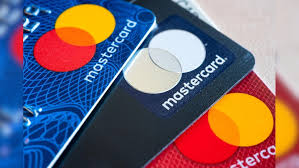Stablecoins challenge Visa and Mastercard worth ₹21 lakh crore: Will the future of digital payments change?
A new battle has begun in the world of digital payments — and this time big players like Visa and Mastercard have been put on the defense. According to a recent Bloomberg report, stablecoins — a new digital currency format pegged to the dollar — have become a tool in the hands of tech companies and crypto start-ups that is proving to be a huge threat of ₹21 lakh crore ($253 billion) for traditional card networks.
Stablecoin’s Simple Formula: Fast, Cheap, and Direct
The basic idea of stablecoin is simple: people can pay merchants directly from their crypto wallets — without going through a bank or card network. That means no Visa, no Mastercard. U.S. businesses will pay nearly ₹15 lakh crore ($187 billion) in swipe fees to payment processors by 2023 itself. Stablecoins could almost eliminate these fees — or at least reduce them a lot.

Christian Catalini, founder of the MIT Cryptoeconomics Lab, says:
“This whole space could become a real threat to traditional financial providers. But Visa and Mastercard are not sitting idly by.”
Visa-Mastercard’s Tactics: Taking Crypto With You
Seeing the rapid growth of stablecoins, Visa and Mastercard have started painting themselves in new colors. Now these companies want to see themselves as the backbone of digital transactions, not just traditional card networks. They are launching new crypto-linked cards and creating stablecoin-based services for banks.
The aim of this strategy is the same: include new players in the system, and maintain your market power.
The future of stablecoin market is bright
According to U.S. Treasury Secretary Scott Bessent, the stablecoin market which is worth ₹21 lakh crore ($253B) today, can reach ₹168 lakh crore ($2 trillion) in a few years. This means that the crypto industry, which was till now infamous for speculation and gambling, is now providing a socially useful tool that can make the financial system more efficient.
Big retailers like Walmart are also thinking about stablecoin pilots. Bank technology company Fiserv has launched its own fiat-backed token, allowing even smaller financial institutions to compete in payment innovation.

But the challenges are huge.
Consumers in the US are used to the rewards, fraud protection and credit access that come with cards. Stablecoins are not yet a substitute for all of these things. Also, a lack of FDIC insurance and tax and compliance-related complexities could hinder adoption.
But still, new supporters of digital payments are not going to stop. Shopify has partnered with Stripe and Coinbase to allow direct payments using USDC — a dollar-pegged stablecoin. Card networks have no role to play.
Shopify has also offered customers a 1% cashback option — and that cashback will be in USDC. Coinbase has also launched its own payments platform that allows stablecoin payments to be easily integrated into e-commerce.
Visa-Mastercard’s Counterattack
Visa and Mastercard, which together control 85% of U.S. card spending, are now putting their full weight on global reach, fraud protection, privacy and brand trust. Both companies are making consumer data secure by using tokenization technology.
Visa Chief Product Officer Jack Forestell says:
“We’re already working on tokenized value access. Today that value is bank accounts or credit cards, tomorrow it could be stablecoins.”
Visa has allowed banks to issue their own fiat-backed digital tokens and is now piloting stablecoin settlements. Mastercard has tied up with Paxos’ Global Dollar Network, allowing institutions to mint and redeem the USDG stablecoin.
New era of payment: Mix and Match
Mastercard CPO Jorn Lambert says:
“Stablecoin cards will not replace fiat, but will create new use cases — such as B2B payments, disbursements and remittances.”
In the coming times, with a single payment identity, consumers can decide the source of their transactions — a checking account for small purchases, a credit line for larger ones, and a crypto wallet for a specific merchant.
Conclusion: Not sudden, but change is happening
Whenever new technology has come up — whether it is mobile wallets or buy-now-pay-later — Visa and Mastercard have adapted and maintained their position. Now they are adopting the same strategy in front of stablecoins as well.
This is a golden opportunity for the crypto industry to change its image — and an ultimate test for Visa-Mastercard to maintain their relevance in the new digital era.
